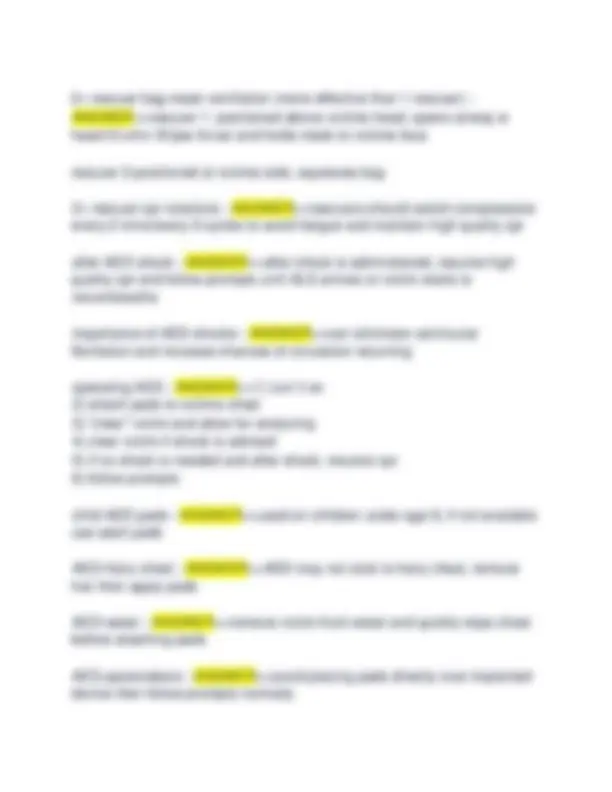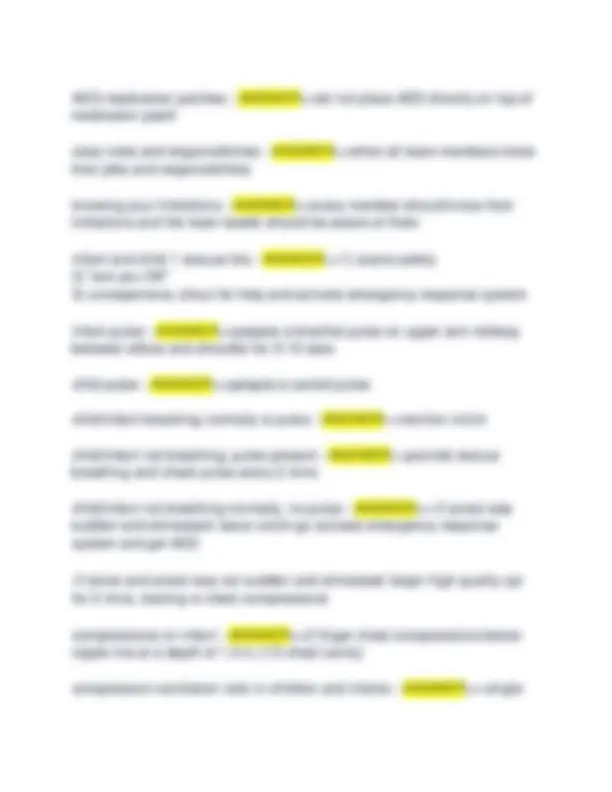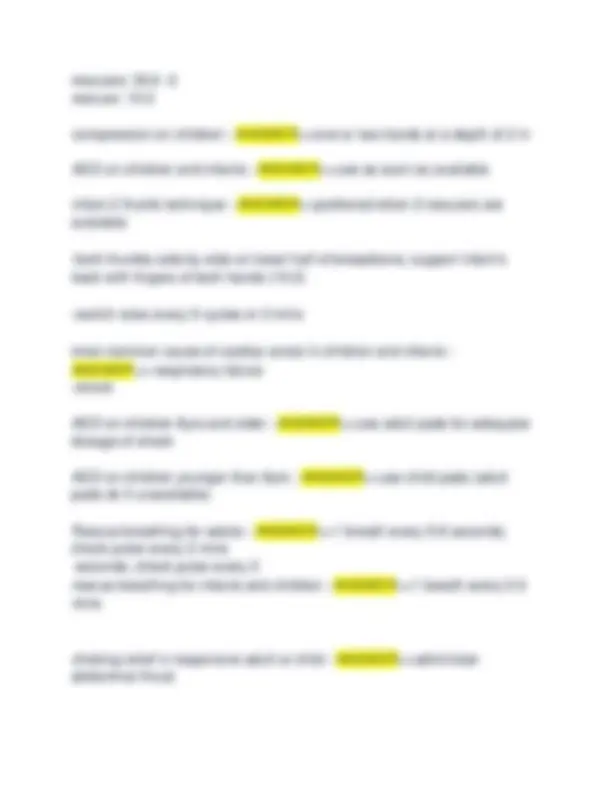





Study with the several resources on Docsity

Earn points by helping other students or get them with a premium plan


Prepare for your exams
Study with the several resources on Docsity

Earn points to download
Earn points by helping other students or get them with a premium plan
Community
Ask the community for help and clear up your study doubts
Discover the best universities in your country according to Docsity users
Free resources
Download our free guides on studying techniques, anxiety management strategies, and thesis advice from Docsity tutors
AHA BLS CPR Exam 2024-2025 Q&A EXAM 2025 REVISION CAB - ANSWER >>chest compressions, airway, breathing first rescuer steps - ANSWER >>1) verify scene safety second step - ANSWER >>2) check for responsiveness "are you OK" third step - ANSWER >>3) if unresponsive, shout for nearby help fourth step - ANSWER >>4) activate emergency responsive system (call 911) fifth step - ANSWER >>5) get the AED Assessing victim - ANSWER >>1) check breathing by looking for chest rise and fall ( no more than 10 secs) -if breathing monitor until help arrives -if gasping, not normal breathing sign of cardiac arrest Assessing victim - ANSWER >>2) check pulse same time as checking breathing
Typology: Exams
1 / 6

This page cannot be seen from the preview
Don't miss anything!




CAB - ANSWER>>chest compressions, airway, breathing first rescuer steps - ANSWER>>1) verify scene safety second step - ANSWER>>2) check for responsiveness "are you OK" third step - ANSWER>>3) if unresponsive, shout for nearby help fourth step - ANSWER>>4) activate emergency responsive system (call
fifth step - ANSWER>>5) get the AED Assessing victim - ANSWER>>1) check breathing by looking for chest rise and fall ( no more than 10 secs)
compression's are stopped, blood flow to the heart and brain decreases significantly and it takes longer to get the blood flowing again single rescuers - ANSWER>>deliver 30:2 when giving cpr to victims of any age compression rate - ANSWER>>100-120/min compression depth for adults - ANSWER>>2 in allowing full chest recoil - ANSWER>>necessary so that blood can refill the heart between compressions importance of firm surfaces - ANSWER>>allows compression of the chest and heart to create blood flow positioning - ANSWER>>must be at victim's side positioning of hands on chest - ANSWER>>heel of palm on lower half of sternum, with heel f other hand atop first hand opening the airway - ANSWER>>-head tilt-chin lift
AED-medication patches - ANSWER>>do not place AED directly on top of medication patch clear roles and responsibilities - ANSWER>>when all team members know their jobs and responsibilities knowing your limitations - ANSWER>>every member should know their limitations and the team leader should be aware of them infant and child 1 rescuer bls - ANSWER>>1) scene safety
rescuers: 30:2 - 2 rescuer: 15: compression on children - ANSWER>>one or two hands at a depth of 2 in AED on children and infants - ANSWER>>use as soon as available infant 2 thumb technique - ANSWER>>preferred when 2 rescuers are available